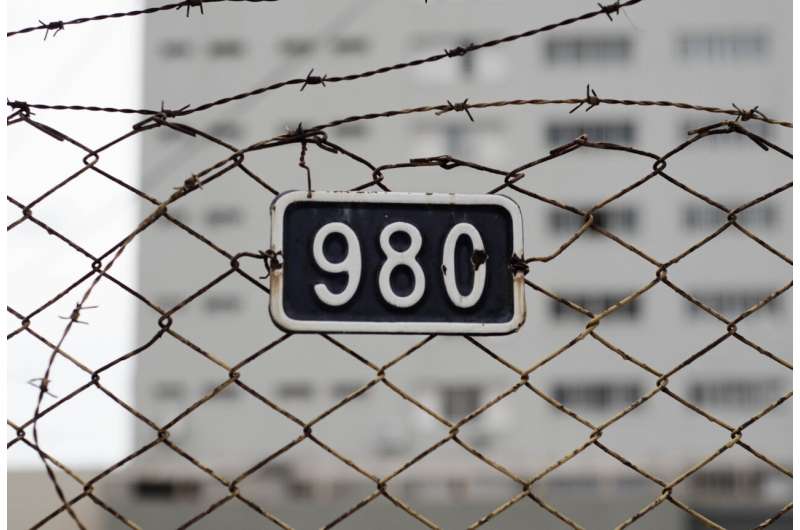Prisoner numbers in Australia have decreased, but we're not really sure why yet

The latest release of the Australian Bureau of Statistics Prisoners in Australia data provides a surprising change: for the first time in seven years, the national imprisonment rate has not increased. In fact, it has decreased by 1%.
The female imprisonment rate decreased by 5%, breaking the trend of a vastly increasing number of women in prison since 2011. And this decrease is most pronounced with respect to Indigenous women, seeing their imprisonment rate going down by 11% over the last year. (Although they remain the fastest growing subgroup within the prison population as their imprisonment rate has more than doubled since 2000.)
So why have we seen a decrease? Looking at the data paints a complicated picture.
8 different jurisdictions
As Australia consists of eight independent jurisdictions, each with its own legislation and penal culture, there are significant differences in the size of their prison populations.
All jurisdictions, except for Tasmania and Victoria, show a small decrease in their imprisonment rate over the last year. However, it's still the case that the Northern Territory imprisons proportionally about four times as many people as the national average, followed by Western Australia (1.6 times). Both jurisdictions having been in pole position for decades.
While imprisonment rates are historically well below the national average in Victoria, they have been increasing continuously since 2010, including over the last year.
Important subpopulations
There are also some subgroups that have been a matter of specific concern for some years.
The proportion of people on remand, awaiting their trial, is still increasing. These people, who are technically "innocent until proven guilty," now account for 33% of the total prison population. This increase started in 2010 following several changes to the legislation restricting the use of bail, which has a stronger impact on Indigenous defendants. This is due to their offending and remand history, as well as social, economic and cultural disadvantage.
The stagnation of the Indigenous imprisonment rate, and particularly the decrease for Indigenous women, still leaves us with a very bleak picture when it comes to Indigenous over-representation. Aboriginal and Torres Strait Islander people are still 12 times more likely to be in prison. Indigenous women are 19 times more likely than non-Indigenous women.
From the limited data we have available on Indigenous offending, we know the rate of Indigenous people charged with offenses is higher than for non-Indigenous people, but remains stable over time. Therefore, it is not an adequate explanation for their rapid increase in the prison population until this year.
The data also provide a snapshot of the profile of people in prison on the 30th of June of that year. As Indigenous people tend to serve shorter terms in prison, they are less likely to be captured on a one-off date.
Data from another Australian Bureau of Statistics source show the influx of Indigenous men and women into the prison system is going up, particularly in the Eastern states.
Uncharacteristically, it's Western Australia and the Northern Territory that are showing the most consistent decrease in Indigenous prisoner receptions.
International comparison
A decrease in the prison population is part of a more global trend. While prison populations were increasing from the second half of the eighties and throughout the nineties in most countries where consistent data was available, this started to reverse in the first decade of the new millennium.
Looking at the World Prison Brief data, imprisonment rates are currently decreasing in several Anglo-Saxon countries (which traditionally have high imprisonment rates), in continental European countries (which tend to have lower rates), and in Nordic countries (which for many years have had very low imprisonment rates).
Crime or policies?
There is the question as to whether this decrease is caused by a reduction in rates of criminal behavior or whether it has been driven by changing public and criminal justice policies. From an international perspective, crime rates have been going down since the nineties.
Australia also experienced a significant fall in recorded crime rates between 2002 and 2016. The murder rate fell by 33%, the rate of kidnapping/abduction fell by 29%, the robbery rate fell by 58%, the rate of burglary/break-and-enter fell by 55%, the rate of motor vehicle theft fell by 54% and the rate of other theft fell by 26%.
But over the same period, the Australian imprisonment rate grew by 36%. This is most likely due to changes in crime (increase of drug-related crime), stricter penal policies towards certain forms of crime, but even more so, targeted policing.
Australian penal politics have strongly been driven by a "law and order" discourse, often in a bet for electoral win. However, crime and justice have been less prominent in recent state elections, or the punitive approach was not supported (see the 2014 Victorian election, and the 2015 Queensland election).
As prison populations are the outcome of a complex interaction of several factors, it's not easy and probably too early to understand what led to a drop in numbers over the past year.
What's important is that there are now numerous reports and countless recommendations to address the overuse of imprisonment, as it is expensive and has been proven to be little effective. Hopefully this means Australia is joining the international trend of a more parsimonious use of the most severe sanction as a means to combat crime.
Provided by The Conversation
This article is republished from The Conversation under a Creative Commons license. Read the original article.![]()

















